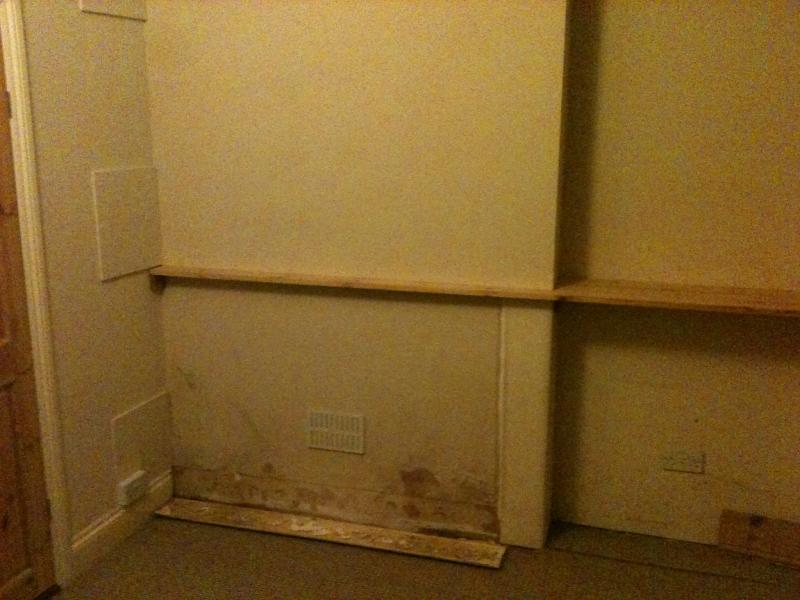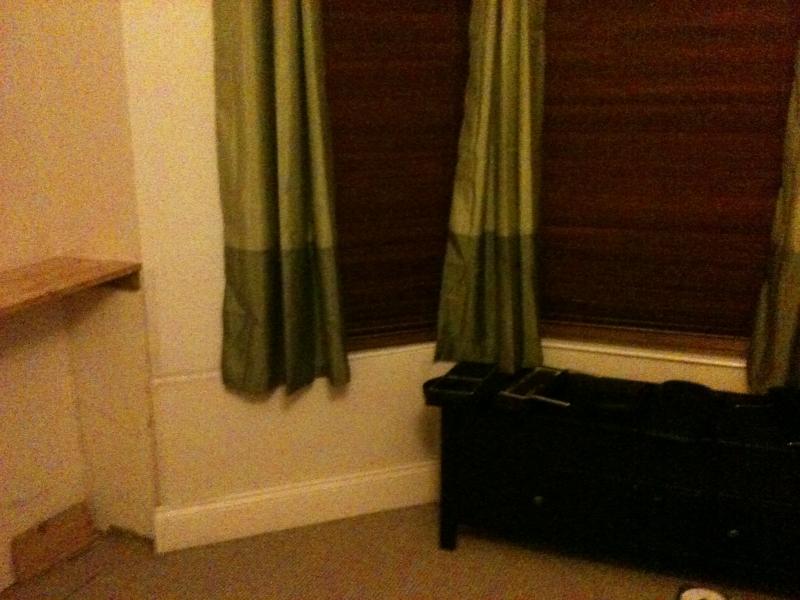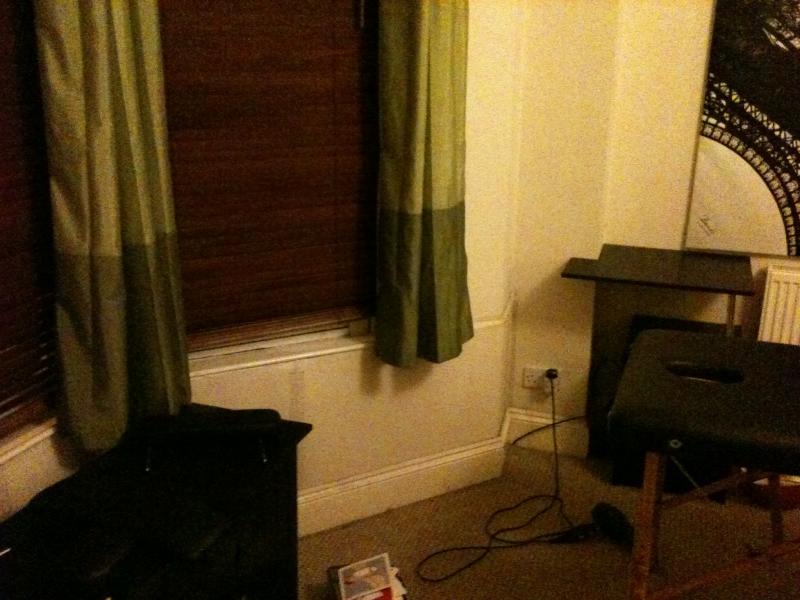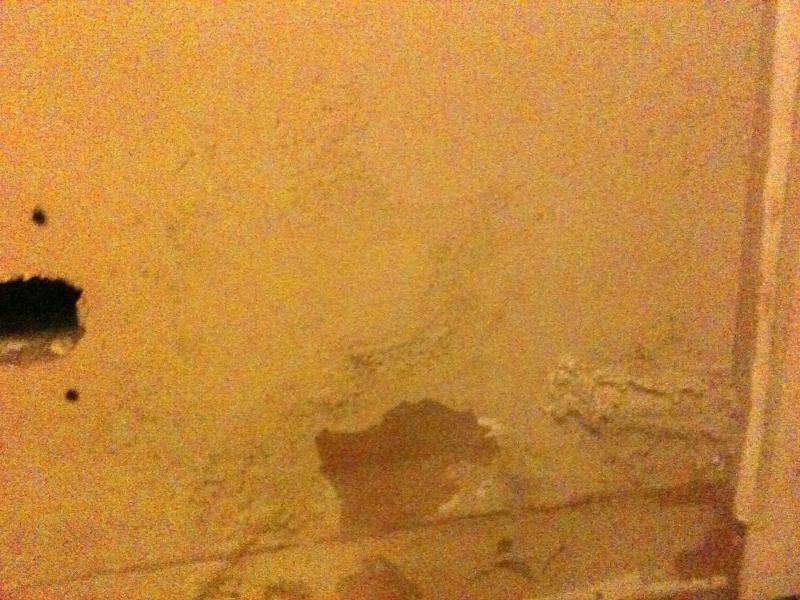Hi all,
I hope someone here can help me sort this problem once and for all. I'll try and explain the problem in as much detail as I can...
I have the ground floor of a 1900 semi and have a damp problem on the outside walls of the two front bedrooms. The construction is solid random stone on the side wall with a render on the outside. Underneath the bay window at the front also has some damp, and from what I can tell that is a combination of two layers of brick (not much of a cavity) and a large block of sandstone under the middle window. On the side walls in both rooms there's a chimney breast with a vent, but they're blocked off upstairs.
When I bought the flat, there was serious problems on the side wall. The plaster was all crumbling off. The solution proposed by the builder was to remove everything back to the brick, then waterproof cement render, then plaster. This was done and seemed fine for a while, then the damp started to come back. It was mainly in the alcove to the right of the chimney breast and under the bay window, and was mostly black mould and some crystallisation, from the floor to about waist height.
My initial thought from the black mould was condensation, as they're definitely cold walls, so I tried a quick fix using some leftover Sempatap from my parents. I applied this under the bay window and round to the chimney breast. This seemed to make a big difference and for the first winter it was fine.
Now however the problem has moved onto the chimney breast it's self, with some of the plaster at the bottom, starting to come away from the brick, and mostly crystallisation with some black mould. On removing the vent on the chimney breast and pocking a stick in there, you can see that there's damp earth filling the chimney to about 10" from the floor. I'm sure that this is bridging to the internal brick and causing the break up of the plaster.
The whole problem is worst in the front bedroom with the bay window, but it's very similar in the second bedroom, but just to a lesser extent.
I've had another builder look at the problem recently and he suggested hacking back to the stone, then bichamin the stone, then waterproof render, then plaster. I'm very wary of this as even if it managed to stop anything that my be penetrating through the wall, I'm guessing that it wouldn't stop any condensation problems, because the walls would still be cold?
My thoughts are to open up the blocked up fireplace and clear out the earth, then hack off back to the stone and brick on the side wall and under the bay window, then put up a drylined wall with insulation behind.
I'm no expert but I've done a fare bit of reading on this subject now, so think I've got a good understanding, but would love some other opinions, before embarking on any work.
I've attached some images of the front bedroom. Sorry for the awful quality and light, I only had my phone.
Any advice will be much appreciated!
Thanks, Robin
I hope someone here can help me sort this problem once and for all. I'll try and explain the problem in as much detail as I can...
I have the ground floor of a 1900 semi and have a damp problem on the outside walls of the two front bedrooms. The construction is solid random stone on the side wall with a render on the outside. Underneath the bay window at the front also has some damp, and from what I can tell that is a combination of two layers of brick (not much of a cavity) and a large block of sandstone under the middle window. On the side walls in both rooms there's a chimney breast with a vent, but they're blocked off upstairs.
When I bought the flat, there was serious problems on the side wall. The plaster was all crumbling off. The solution proposed by the builder was to remove everything back to the brick, then waterproof cement render, then plaster. This was done and seemed fine for a while, then the damp started to come back. It was mainly in the alcove to the right of the chimney breast and under the bay window, and was mostly black mould and some crystallisation, from the floor to about waist height.
My initial thought from the black mould was condensation, as they're definitely cold walls, so I tried a quick fix using some leftover Sempatap from my parents. I applied this under the bay window and round to the chimney breast. This seemed to make a big difference and for the first winter it was fine.
Now however the problem has moved onto the chimney breast it's self, with some of the plaster at the bottom, starting to come away from the brick, and mostly crystallisation with some black mould. On removing the vent on the chimney breast and pocking a stick in there, you can see that there's damp earth filling the chimney to about 10" from the floor. I'm sure that this is bridging to the internal brick and causing the break up of the plaster.
The whole problem is worst in the front bedroom with the bay window, but it's very similar in the second bedroom, but just to a lesser extent.
I've had another builder look at the problem recently and he suggested hacking back to the stone, then bichamin the stone, then waterproof render, then plaster. I'm very wary of this as even if it managed to stop anything that my be penetrating through the wall, I'm guessing that it wouldn't stop any condensation problems, because the walls would still be cold?
My thoughts are to open up the blocked up fireplace and clear out the earth, then hack off back to the stone and brick on the side wall and under the bay window, then put up a drylined wall with insulation behind.
I'm no expert but I've done a fare bit of reading on this subject now, so think I've got a good understanding, but would love some other opinions, before embarking on any work.
I've attached some images of the front bedroom. Sorry for the awful quality and light, I only had my phone.
Any advice will be much appreciated!
Thanks, Robin






